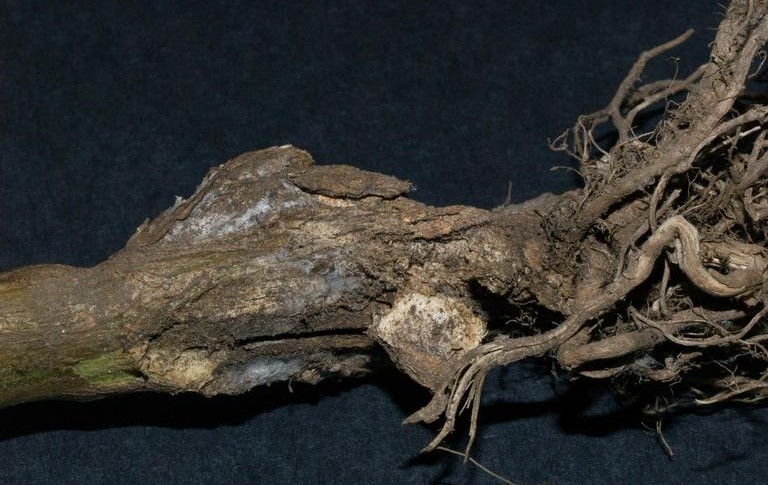Fusarium Crown & Foot Rot of Cucurbit Crops
Return to Diseases
Fusarium crown and foot rot (Fusarium solani f. sp cucurbitae) affects winter squash and pumpkin, but other cucurbits may be affected, especially when the soil is wet or saturated. Wilting of one or more leaves is often the first noticeable symptom, followed by plant collapse. A dark, necrotic canker is normally present at the soil line (crown of plant) and can extend into the main root. Stems become brittle and break off at the soil line. Sporulation, white to pink in color, may be present on infected crown tissue. Affected tissue may take on a “shredded” appearance in later stages as soft tissues degrade, leaving only the vascular bundles behind. This is the same pathogen that causes Fusarium fruit rot (see #33).

Fusarium crown and foot rot.
(Photo: Bruce Watt, University of Maine, Bugwood.org)
Management:
- Space plants for air circulation and rapid drying.
- Apply protectant fungicides before or at planting.
- Promptly remove and destroy diseased plant material during the growing season.
- Manage weeds and potential alternative hosts.
- Avoid the movement of infested soil to clean fields.
- Promptly destroy crop residues after harvest.
- Deep plow to bury residual inoculum.
- Rotate with nonhost crops for at least 3 years.
